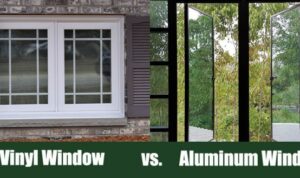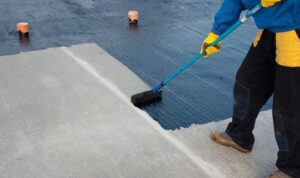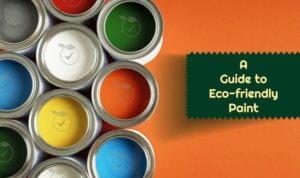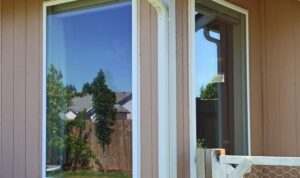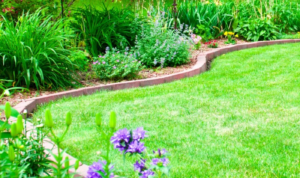Eco-friendly house paint options bring a sustainable touch to your home, offering a range of choices that are both environmentally conscious and stylish. From water-based to low-VOC and natural ingredient paints, the world of eco-friendly painting is vibrant and diverse.
Let's dive into the details of these innovative options and discover how you can enhance your living space while reducing your carbon footprint.
As we delve deeper into the realm of eco-friendly house paint options, we will uncover the key features, benefits, and considerations that come with choosing these sustainable alternatives for your next painting project.
Types of Eco-Friendly House Paints

When it comes to eco-friendly house paints, there are several options available in the market that are better for the environment and human health.
Water-Based Paints
Water-based paints are a popular choice for eco-friendly house painting. These paints contain lower levels of volatile organic compounds (VOCs) compared to traditional oil-based paints. Water-based paints are easy to clean up with water, have less odor, and dry faster, making them a convenient and eco-friendly option for indoor painting projects.
Low-VOC Paints
Low-VOC paints are another eco-friendly alternative for house painting. These paints have reduced levels of harmful chemicals, such as formaldehyde and benzene, which can be detrimental to both the environment and human health. Low-VOC paints emit fewer toxic fumes, making them a safer option for people with sensitivities or allergies.
Natural Ingredient Paints
Natural ingredient paints are made from renewable resources such as plant oils, clay, chalk, and natural pigments. These paints are free from synthetic chemicals and toxins, making them the most environmentally friendly option for house painting. Natural ingredient paints are biodegradable, non-toxic, and emit minimal odors, providing a healthier indoor air quality for you and your family.
Factors to Consider When Choosing Eco-Friendly House Paint
When selecting eco-friendly house paint, there are several important factors to keep in mind to ensure you make the best choice for your needs and the environment.
Durability
Durability is a key factor to consider when choosing eco-friendly house paint. Look for paints that are not only environmentally friendly but also long-lasting and resistant to wear and tear.
Coverage
Consider the coverage of the paint you choose. Opt for eco-friendly paints that offer good coverage with fewer coats, as this can help reduce waste and minimize the environmental impact of your painting project.
Color Options
While eco-friendly house paints come in a variety of colors, it's important to check if the specific color you want is available in environmentally sustainable options. Ensure that the paint you choose meets your aesthetic preferences while also being eco-friendly.
Certifications and Standards
It's crucial to check for certifications like Green Seal or LEED when selecting sustainable paints. These certifications ensure that the paint meets specific environmental standards and has been independently verified for its eco-friendly properties.
Environmental Impact
To ensure that the paint you choose meets environmental standards, look for information on the paint's composition, including the presence of volatile organic compounds (VOCs) and other harmful chemicals. Opt for paints that are low-VOC or VOC-free to minimize the impact on indoor air quality and the environment.
Application Techniques for Eco-Friendly House Paint
When it comes to applying eco-friendly house paint, proper techniques can make a significant difference in the final result. From preparing surfaces to achieving a professional finish, here are some tips to help you get the best results with water-based or low-VOC paints.
Surface Preparation
Before applying eco-friendly house paint, it is crucial to prepare the surfaces properly. This includes cleaning the surface to remove any dirt, dust, or grease. Patching up any holes or imperfections and sanding the surface for a smooth finish is also essential.
Proper surface preparation ensures that the paint adheres well and results in a long-lasting finish.
Application Techniques for Water-Based or Low-VOC Paints
When applying water-based or low-VOC paints, it is important to use the right tools and techniques. Start by using high-quality brushes or rollers to ensure even application. Stir the paint thoroughly before use and apply it in thin, even coats to prevent drips or streaks.
Allow each coat to dry completely before applying the next one for a smooth and professional finish
Tips for Achieving a Professional Finish
To achieve a professional finish with eco-friendly house paint, consider the following tips:
- Work in a well-ventilated area to prevent inhaling fumes from the paint.
- Use painter's tape to protect surfaces that you don't want to paint.
- Cut in the edges before rolling the paint for a clean and crisp finish.
- Avoid overloading the brush or roller with paint to prevent drips.
- Follow the manufacturer's instructions for drying times and recoating to ensure the best results.
By following these application techniques and tips, you can achieve a beautiful and eco-friendly paint finish for your home.
DIY Eco-Friendly Paint Recipes
Creating your own eco-friendly paint at home can be a fun and rewarding experience. Not only are you reducing your carbon footprint by using natural ingredients, but you also have the flexibility to customize colors according to your preference.
Homemade Chalk Paint
To make your own chalk paint, you will need the following ingredients:
- 1 cup of latex paint
- 1/4 cup of water
- 1/2 cup of plaster of Paris
Mix the water and plaster of Paris until smooth, then add the latex paint and stir well. You can adjust the consistency by adding more water if needed. Use this paint for a vintage, matte finish on furniture or walls.
Natural Milk Paint
For a natural milk paint, gather these ingredients:
- 1 cup of milk (dairy or plant-based)
- 2 tablespoons of lemon juice
- Natural pigments for color
Warm the milk and mix in the lemon juice to create a curdled effect. Add natural pigments for color and mix until smooth. This paint is perfect for a rustic, textured look on wooden surfaces.
Benefits of DIY Eco-Friendly Paint
By making your own eco-friendly paint, you avoid harmful chemicals found in conventional paints, reduce waste, and save money.
Customizing colors allows you to match your decor perfectly, and the satisfaction of creating something unique adds a personal touch to your home.
Concluding Remarks

In conclusion, eco-friendly house paint options offer a compelling blend of sustainability and style for modern homeowners. By exploring the various types, factors to consider, application techniques, and even DIY recipes, you can embark on a painting journey that not only beautifies your home but also contributes to a greener planet.
Make the switch to eco-friendly paints and make a lasting impact with every brushstroke.
Common Queries
What are the benefits of using natural ingredient paints?
Natural ingredient paints are free from harmful chemicals, making them ideal for individuals with sensitivities or allergies. They also have a lower environmental impact compared to traditional paints.
How can I ensure that eco-friendly paint meets environmental standards?
Look for certifications like Green Seal or LEED on the paint cans. These certifications indicate that the paint meets certain environmental criteria and is safe for use.
What are some tips for achieving a professional finish with eco-friendly house paint?
Ensure proper surface preparation, use high-quality painting tools, and follow the manufacturer's instructions carefully. Taking your time and applying multiple thin coats can also help achieve a smooth, professional look.



